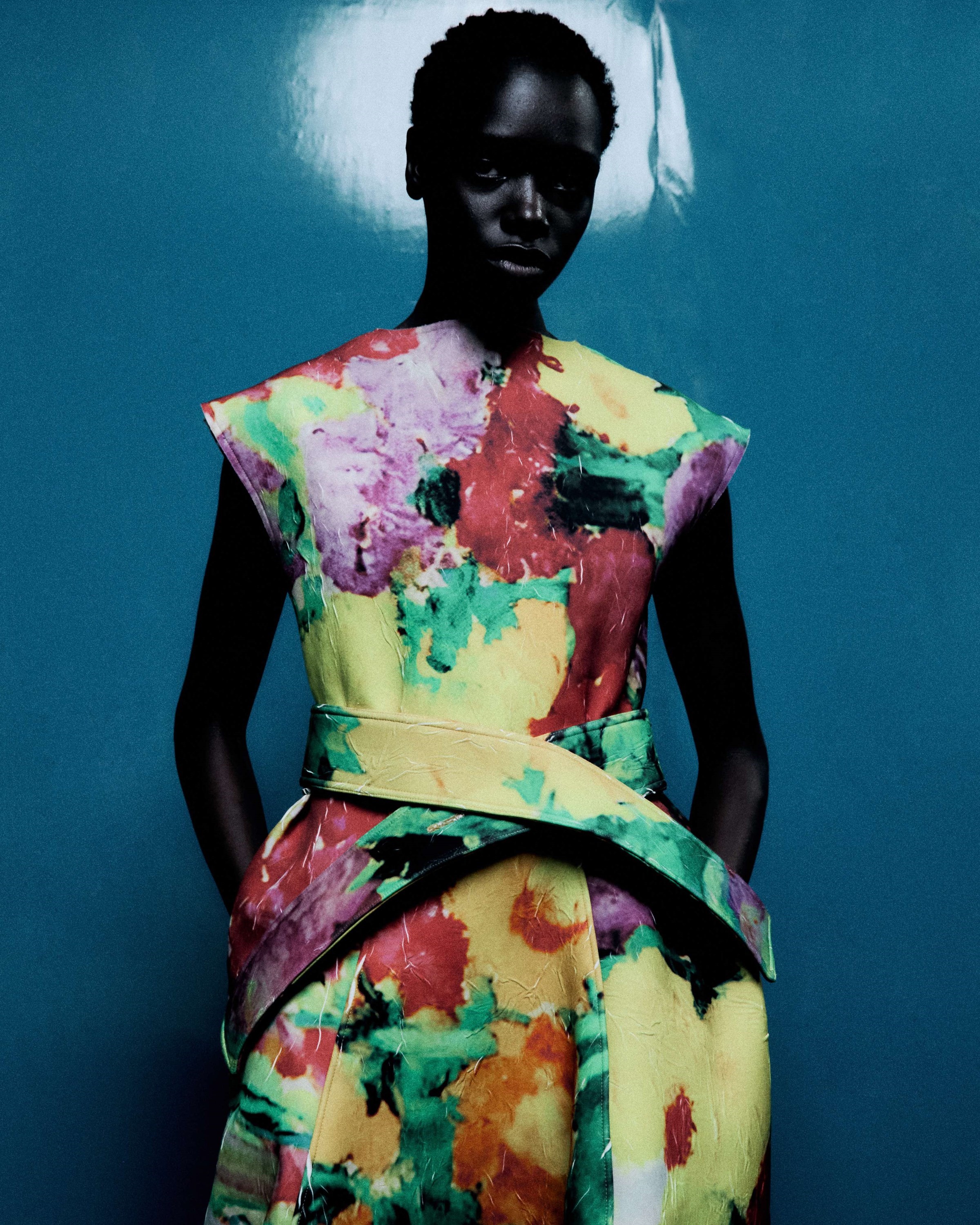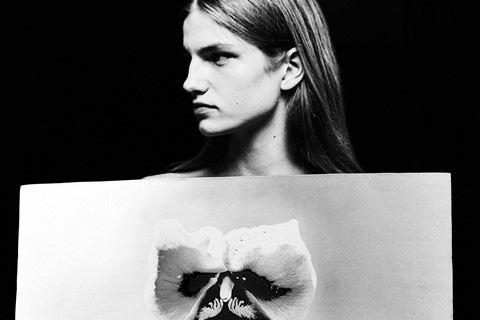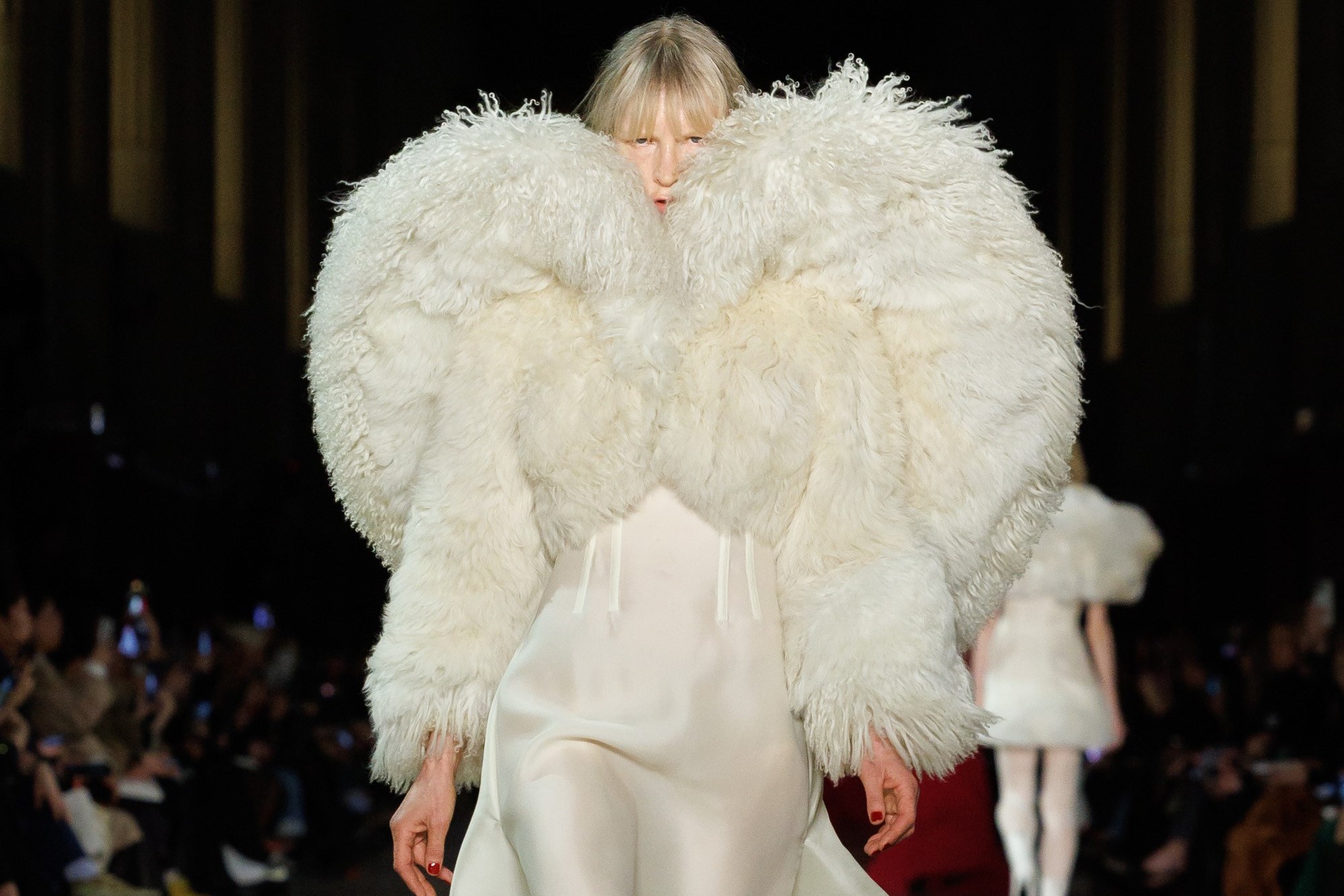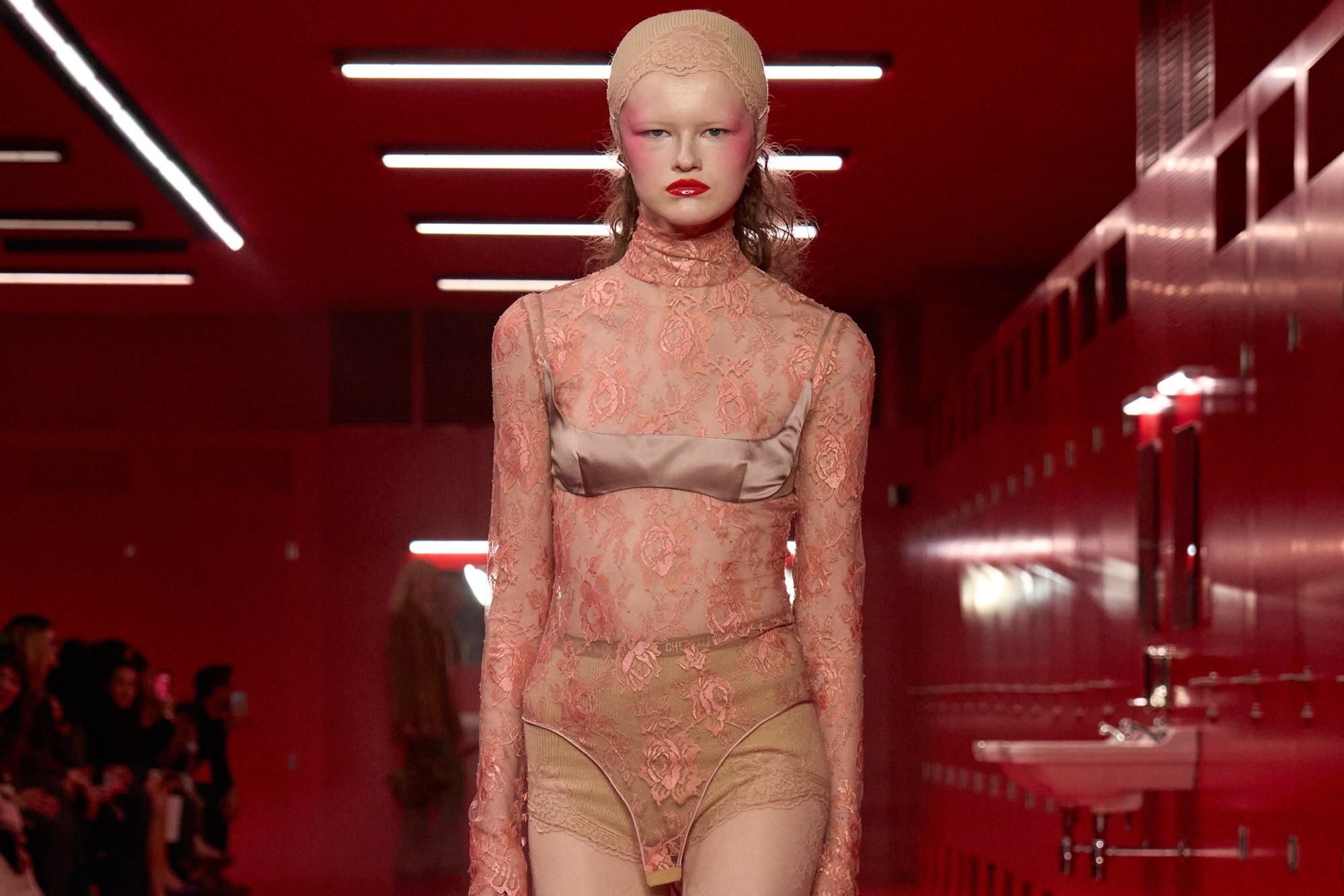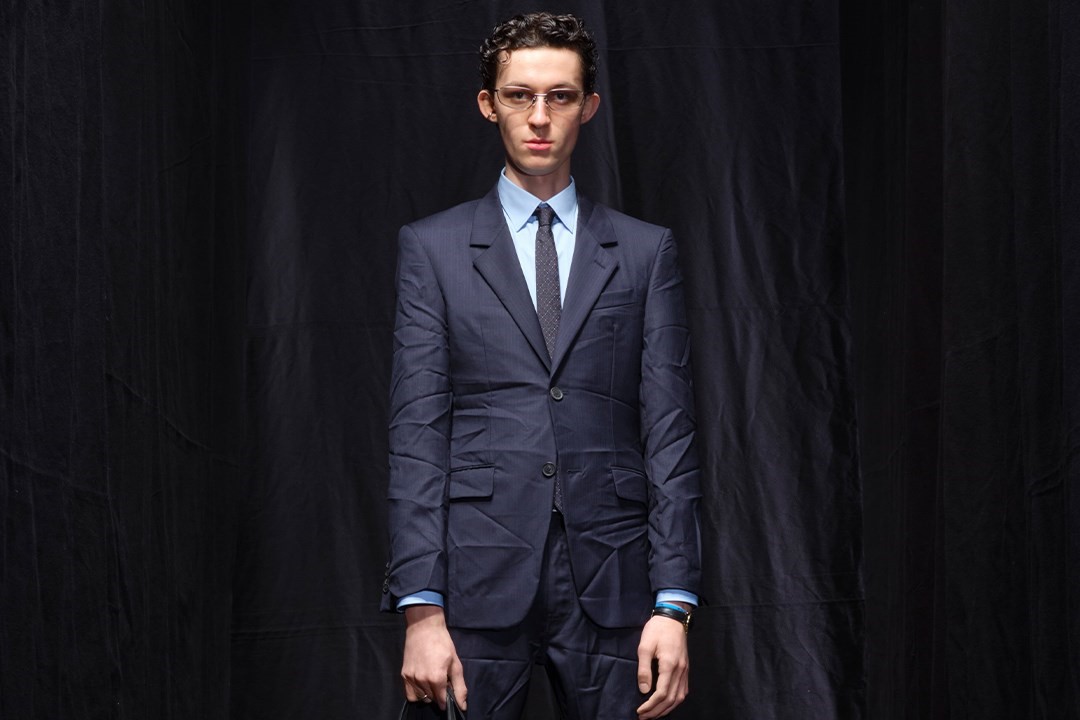Earlier this year, Zomer’s founders Danial Aitouganov and Imruh Asha were invited to give a lecture at the Savannah College of Art and Design in the US on the development of their collective label. “We were sitting in a garden there, in Savannah, talking about life, the universe, and all of its problems,” recalls Aitouganouv. “Then we looked at each other and said, ‘What would the garden of Zomer look like?’” It was at this moment that the roots were laid, and the seeds sown for their spectacular Spring/Summer 2025 collection, presented yesterday at Palais de Tokyo as part of Paris Fashion Week’s official calendar.
Gardens and florals for spring may seem like a slightly regressive, rather naff theme for a brand which, with only three collections under its belt, has established one of the most astute and confident aesthetics in the industry. But, as was clear from the first look – featuring a gently crinkled, painterly textile designed by Aitouganouv himself – the Zomer garden was groundbreaking: intuitive rather than didactic, the theme was fertile ground for the designers to let their immense talent run wild and tendril to innovative planes of texture, textile, and cut.
Speaking in the days prior to the show, Aitouganov said that he and Imruh had now settled into their working stride. “We’ve been friends forever, so it’s not about proving who’s right,” he said. “We can say anything to each other, we push each other to do our best.” This explicit trust in each other’s creativity translated into their most technically versatile yet complete collection to date. There were gathered cottons and leathers (most notably used to cinch perfectly tailored jackets), a patchwork feathered and embroidered skirt, graphic printed neoprenes, and a weighty sculptural beaded dress, amongst many other design feats. Leather continues to be a house-favourite (Zomer are sponsored by Ecco) and was coated, painted, and cut into fluid skirts and tops as to defy its inherent material structure. “I wanted to give Imruh as many options as possible for the styling,” laughed Aitouganov.
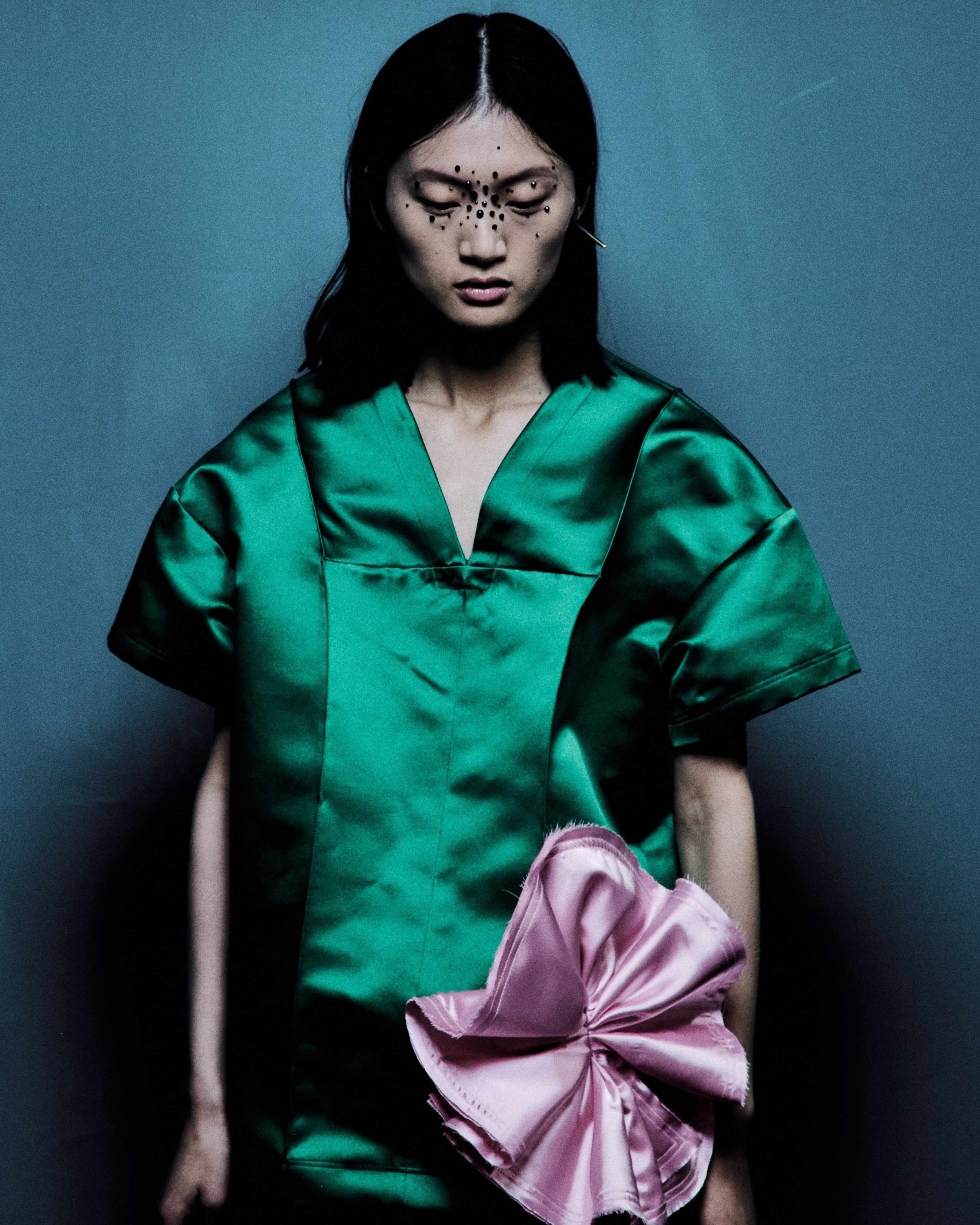
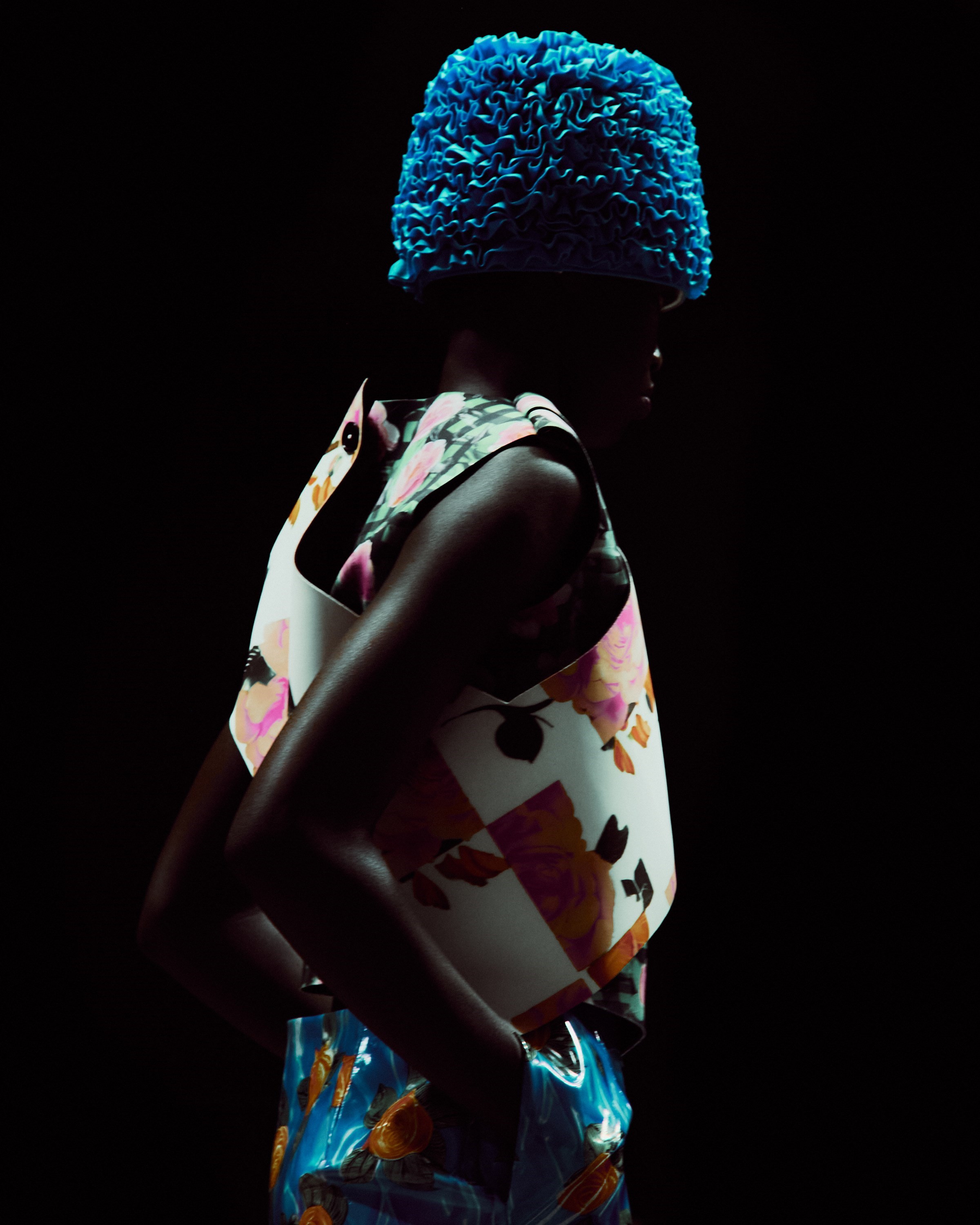
And it was perhaps the show’s styling that showed the worldliness of the Zomer garden. Graphic square-cut tops of floral photographs were paired with more commercial denims; an exuberant skirt tangled with colourful tubing was balanced with an elegant evening jacket. Similarly, bold-coloured silhouettes were paced with more earthen palettes and night-black eveningwear. Each look was completed with sneakers co-designed with Finnish-based label Karhu (worn unlaced down the runway) or bulbous-heeled shoes from Yume Yume.
Just this summer, Zomer settled into their first standalone studio and pop-up shop front, in the centre of Paris – a fitting move for a brand that inspires community through the joy of its designs. In this spirit, they collaborated with Debeaulieu, a Parisian artisanal floristry studio, on two show-stopping pieces: an unruly bouquet-dress of chrome-dipped artificial flowers and a spritely composition that was assembled backstage on the day of the show. The duo also worked with London-based design studio Isabel + Helen to create towering mechanical ‘flower’ sculptures, covered in textiles featured in the show, that cut through the sterility of the white-cubed space and the silvery Parisian skies.
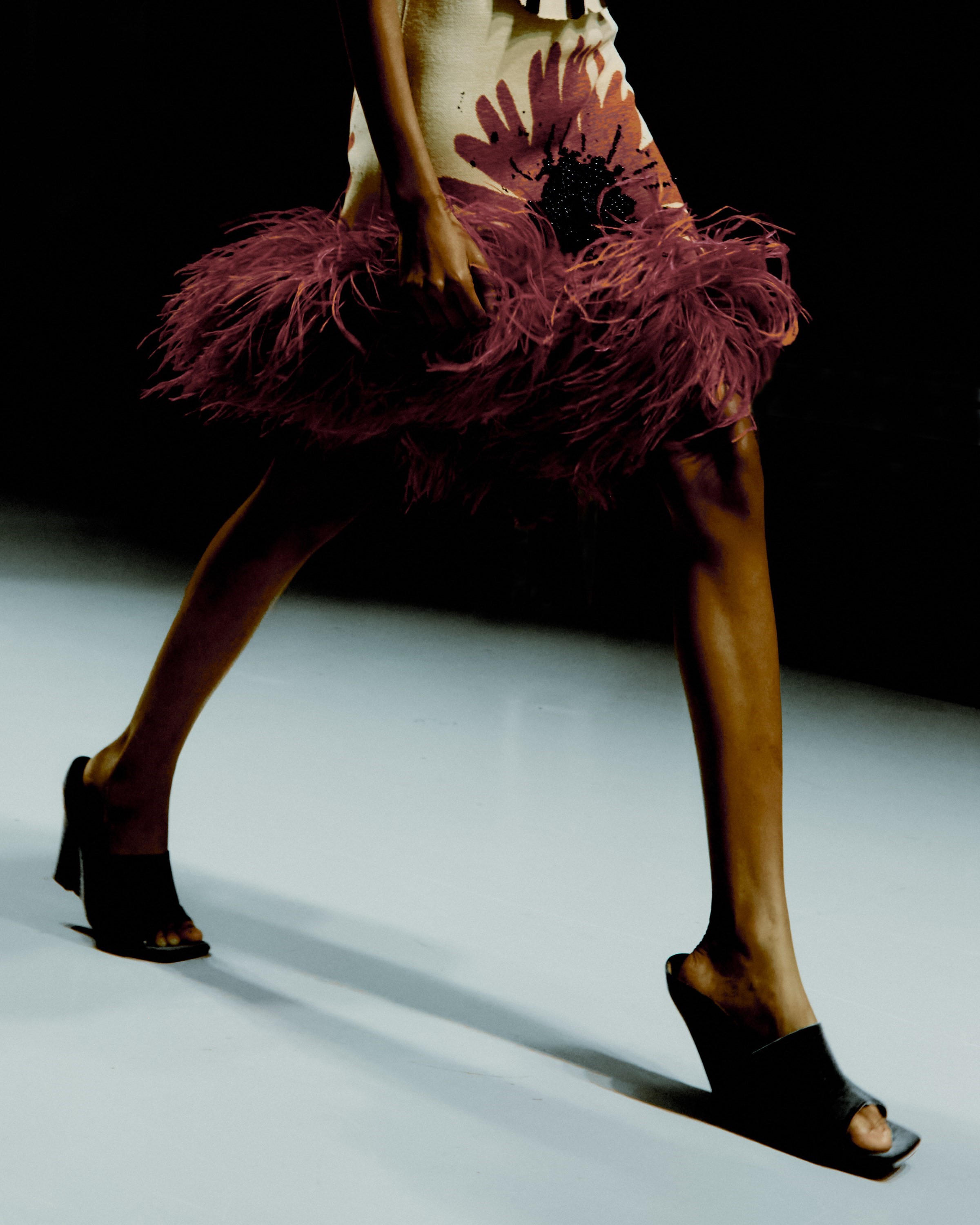
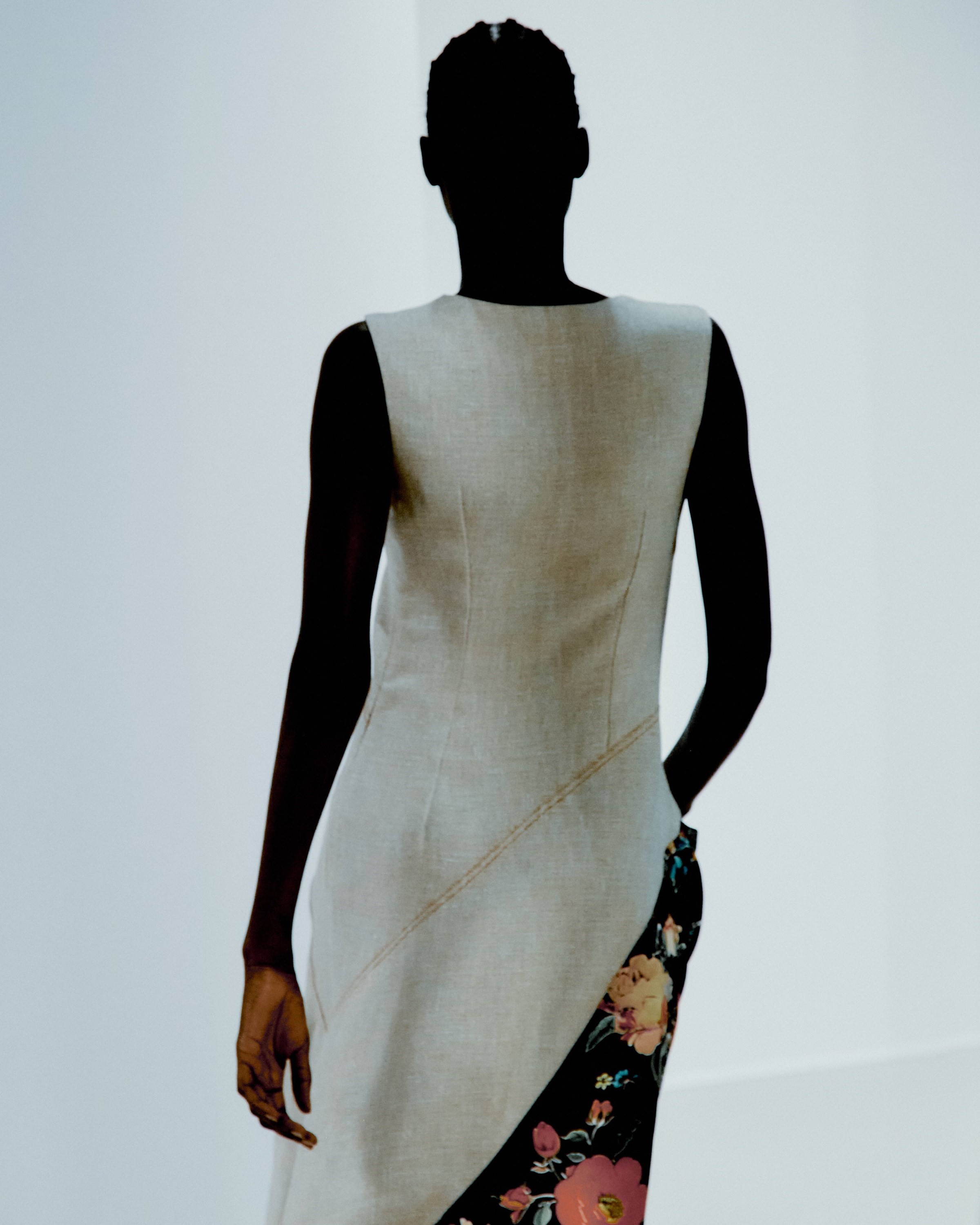
From the launch of their label, Aitouganov and Asha have continuously reinforced that Zomer is a project driven by playfulness, a child-like approach guided by instinct and feeling. But it would be wrong to interpret this as naïve optimism or tone-deaf joy (especially given the state of the world). For as the depth of their S/S25 collection proved, the designers are appropriately aware that there is no light without darkness, and no zomer (the Dutch word for ‘summer’) without winter.
